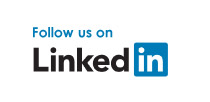ATHEXClear as a central counterparty (CCP) is managing a range of risks. Its organizational structure in support of risk its management function is comprised by the following components:
- the Board of Directors, which has the final responsibility and accountability with regard to the company's risk management function.
- The Risk Committee (RC), which advises the BOD on risk management matters.
- The Default & Crisis Management Committee, delegated by the BOD in order to take measures in the event of a clearing member default and for its day-to-day risk management.
- The Investment Committee, which takes decisions related to investment policy.
- The Risk Management Unit of ATHEXClear, having a comprehensive approach to the risks faced by ATHEXClear with the aim of identifying, assessing and managing them.
- Chief Risk Officer, the head of the Risk Management Unit, who reports on risk management matters to the BOD directly or through the Chairman of the RC and implements the risk management framework approved by the BOD.
- Organizational Units, which are responsible for identifying and managing the risks that fall within their remit.
The main categories of risk to which ATHEXClear is exposed are:
- Counterparty Credit Risk
- Liquidity Risk
- Operational Risk
Counterparty Credit Risk
To cover Counterparty Credit Risk vis-a-vis its clearing members (CM), ATHEXClear monitors and calculates margin (market risk) on a daily basis (end-of-day but also intraday in near real-time basis) for each clearing account which is then covered by corresponding collateral in the form of cash and/or selected transferable securities that is pledged by CMs.
Eligible transferable securities, the maximum valuation limit and the applicable haircuts are updated on a monthly basis and/or at an ad-hoc basis if deemed necessary and are posted here.
On the basis of the amount of pledged collaterals, the CMs obtain a credit limit which they can allocate to their affiliated trading members (TM). The TM's credit limit is updated on an ongoing basis depending on its consummation (orders/trades).
ATHEXClear manages the default funds (DF) of both markets (securities and derivatives) which are risk-sharing funds; CMs contribute in each DF only in the form of cash. The minimum DF share of each CM is recalculated on a monthly basis in accordance with the provisions of the rulebooks to ensure that their size is adequate to meet at any time the requirements laid down by the EMIR Regulation (EU) 648/2012 (Cover 1, 2). In addition, ATHEXClear holds separately for each DF special own pre-funded financial resources ("Skin in the Game" - SIG) in cash to cover potential losses in the event of EM default.
The effectiveness of the risk management models, the value of their parameters, the adequacy of default fund amounts and the liquidity resources are examined on a regular or extraordinary basis under extreme but plausible market conditions (Margin/Haircut Back-Testing, Sensitivity Analysis, Credit and Liquidity Stress Test, Reverse Stress test etc.).
In the event of a CM default ATHEXClear activates the default waterfall where the different loss absorption resources apply with the following order:
Liquidity Risk
The aim of ATHEXClear is to maintain a sufficient level of liquidity so as to ensure fulfilment of same-day and, where appropriate, intraday settlement of payment obligations in all relevant currencies. When assessing the level of liquidity requirements, both the operational liquidity requirements and those arising from the default of the two largest CM groups with the largest exposure to liquidity risk are taken into account.
The available liquidity sources for each clearing service are:
- cash collaterals deposited by all CMs (based on the "right of use" clause according to the authorization provided to ATHEXClear in accordance with its rules book),
- cash from the DF shares
and for both clearing services are:
- ATHEXClear's own liquid resources.
The available liquidity of ATHEXClear is examined for each market separately (Securities, Derivatives) according to the criteria laid down by EMIR Regulation (EU 648/2012). ATHEXClear examines on a daily basis separately for each clearing system and under extreme but plausible market conditions, whether it has sufficient liquid resources to cover the liquidity needs arising from the default of the two (2) groups of associated CMs against which it has the highest liquidity needs when closing out their positions (Cover 2).
Testing and Review of Models and Procedures
Parameters as well as the methodologies of ATHEXClear's risk management and haircut models are subject to a monthly, quarterly and yearly statistical acceptance tests, while the adequacy of the margining models are subject to day-to-day statistical portfolio coverage tests. Also, on a monthly basis, sensitivity analysis of the required margin at portfolio and market level is carried out by simulating changes in parameter values of the risk management model.
According to EMIR requirements the adequacy of the DF is assessed daily against counterparty credit risk events under extreme but plausible market conditions for each DF separately. Hence the CCP shall cover with prefunded financial resources the default of the CM group in which it has the largest risk exposure in terms of loss or that of the 2nd & 3rd largest CM group if the loss is higher (Cover 1). Additionally it has to cover the risk exposure of the 1st & 2nd largest CM group including SIG (Cover 2). The DF adequacy is evaluated on a quarterly basis, based on the determination and the assessment of those market scenarios that lead to its exhaustion (reverse stress testing).
The adequacy of liquidity is reviewed daily by stress testing the liquid resources against counterparty credit risk events under extreme but plausible market conditions for each clearing fund separately. Also, on a quarterly basis, those scenarios are examined that lead to the exhaustion of liquid financial resources (reverse stress test).
On a yearly basis, an easement of the adequacy of the correlation assumptions is performed for each portfolio margin model separately.
On an annual basis, the risk management models, the methodologies and the stress test framework are reviewed by an independent external validator.
On a yearly basis, a default exercise of a clearing member(-s) is carried out (fire drill). The exercises carried out under the supervision of the Hellenic Capital Market Commission, while participants are CMs and TMs, the Athens Exchange as Market Operator, the Default and Crisis Management Committee, the Financial Services Division; the Risk Management Unit and the Clearing and Settlement Unit of ATHEXClear act as coordinators. The aim of the exercise in to ascertain the readiness of the participants, as well as the adequacy of the models and procedures in dealing with the default of one or more CMs.
Operational Risk
The Operational Risk Framework of ATHEXClear sets out the principles and procedures for the management of operational risk, as well as the roles and responsibilities which have been assigned. The framework stipulates the various procedures for identifying, evaluating, mitigating and monitoring risk. The main components of the framework are:
- Identification of possible risks by means of a risk and control self-assessment (RCSA) process.
- Collection of data relating to actual events which led to or could lead to losses.
- Development of action plans and establishment of key risk indicators (KRI) for addressing and monitoring risks.






 20240917 Bank of Cyprus Holdings plc - Summary Document-ENG-Final.PDF
20240917 Bank of Cyprus Holdings plc - Summary Document-ENG-Final.PDF  AUTOHELLAS_PROSPECTUS.pdf.crdownload
AUTOHELLAS_PROSPECTUS.pdf.crdownload 
 Resolution No 22 Regulation of Technical Matters for Trading on ATHEX Markets 22042024
Resolution No 22 Regulation of Technical Matters for Trading on ATHEX Markets 22042024 
